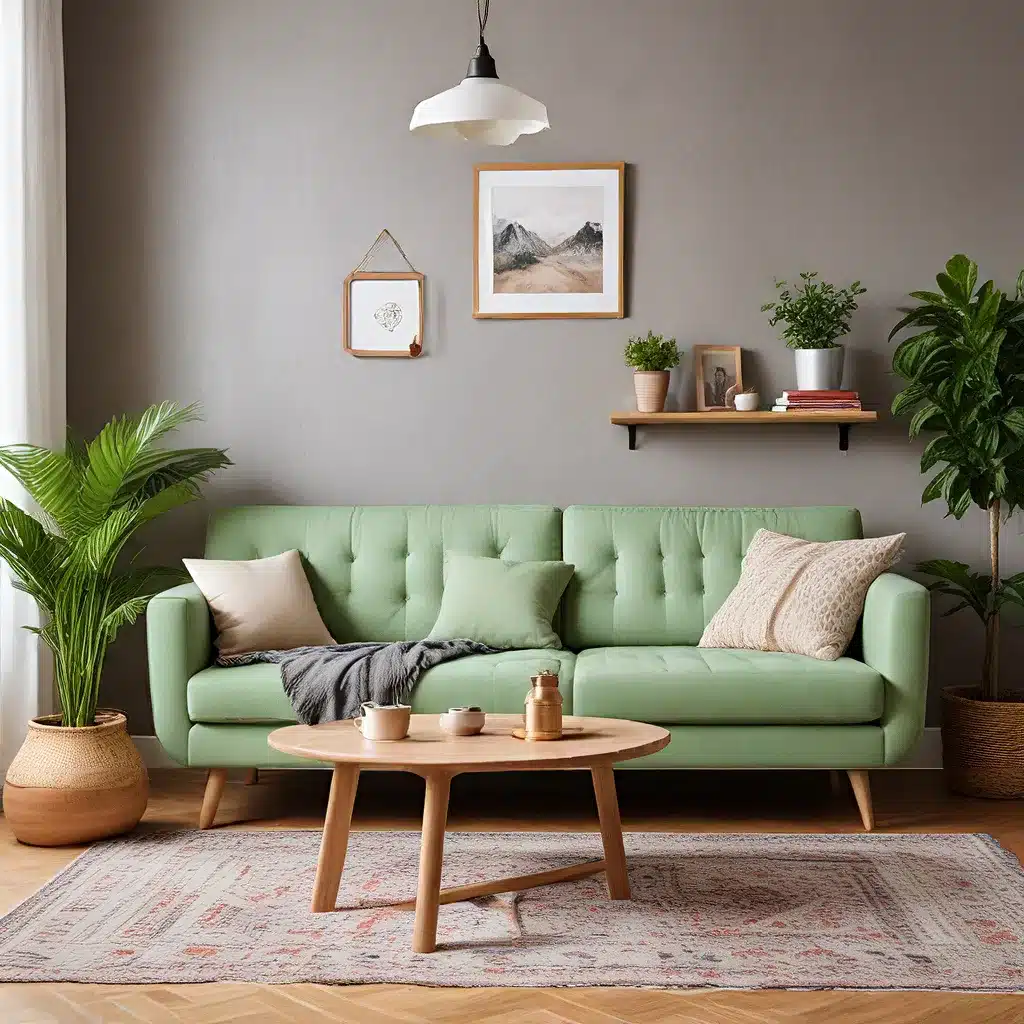
In today’s design landscape, the demand for sustainable and eco-friendly home furnishings is steadily on the rise. Homeowners and design enthusiasts alike are increasingly seeking ways to create beautiful, comfortable spaces that align with their values and minimize their environmental impact. This shift towards green and responsible living has given rise to a wealth of innovative, stylish, and non-toxic alternatives to traditional home decor.
Embracing Eco-Conscious Materials
One of the most significant trends in sustainable interior design is the embrace of natural and renewable materials. Bamboo, for example, has emerged as a versatile and durable option for furniture, flooring, and even window treatments. Not only is bamboo a highly renewable resource, but it also boasts a sleek and modern aesthetic that complements a wide range of design styles.
Similarly, organic and biodegradable fabrics, such as linen, organic cotton, and recycled polyester, are becoming increasingly popular for upholstery, curtains, and bedding. These materials not only reduce the environmental impact of production but also offer superior breathability and longevity compared to their synthetic counterparts.
Rethinking Traditional Finishes
In addition to eco-conscious materials, sustainable interior design also focuses on alternative finishes and treatments. Low-VOC (Volatile Organic Compound) paints, for instance, have become a go-to choice for homeowners seeking to create healthy, toxin-free living spaces. These paints, which emit fewer harmful chemicals, are available in a wide range of colors and sheens, allowing for seamless integration into any design scheme.
Another sustainable option for finishes is natural waxes and oils, which can be used to protect and enhance the beauty of wood furniture and flooring. These plant-based alternatives to conventional sealants and polishes not only offer a beautiful and durable finish but also eliminate the need for harsh chemical treatments.
Prioritizing Multifunctionality and Longevity
Sustainable interior design is also about embracing multifunctional and long-lasting pieces. Modular furniture, for example, allows homeowners to reconfigure and repurpose their pieces as their needs evolve, reducing the need for frequent replacements. This approach not only aligns with the principles of sustainability but also offers greater flexibility and personalization within the home.
Similarly, vintage and antique furnishings are gaining popularity, as they often boast superior quality and craftsmanship compared to mass-produced alternatives. By incorporating these timeless pieces into their spaces, homeowners can enjoy the character and charm of the past while contributing to a more circular and sustainable economy.
Designing for Reduced Environmental Impact
Beyond the selection of materials and finishes, sustainable interior design also encompasses practices that minimize the overall environmental impact of a project. This can include energy-efficient lighting, water-saving plumbing fixtures, and smart home technologies that optimize resource consumption.
Homeowners and designers can also explore the use of reclaimed or recycled materials, such as repurposed wood, upcycled glass, or salvaged metal, to create unique and one-of-a-kind design elements. These sustainable solutions not only reduce waste but also add a personal and distinctive touch to any space.
Engaging with Professional Interior Designers
For those seeking to create a truly sustainable and luxurious home, collaborating with a professional interior designer can be invaluable. These experts can provide personalized guidance, sourcing eco-friendly products, and developing custom design solutions that cater to the homeowner’s unique needs and preferences.
By working with a design professional, homeowners can ensure that their space not only reflects their style and values but also maximizes the efficiency, longevity, and environmental impact of their home. From space planning to material selection, a skilled interior designer can help homeowners navigate the world of sustainable design and create a living environment that is both beautiful and responsible.
Embrace the sustainable splendor of eco-friendly home furnishings and create a space that truly reflects your commitment to a better future. By incorporating natural materials, responsible finishes, and multifunctional design elements, you can elevate your home’s aesthetic while reducing your environmental footprint. Explore the vast array of stylish and innovative options available and transform your living space into a sanctuary of sustainable luxury.

